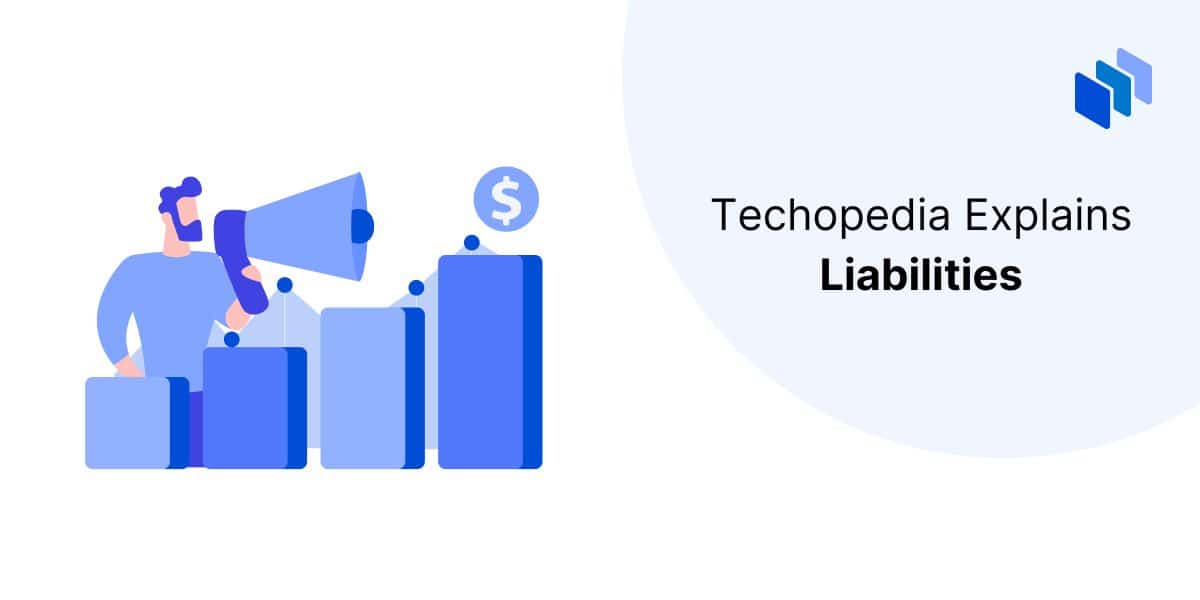What is a Liability?
A liability refers to a company’s financial obligations that arise from past transactions or events. It is essentially a debt owed by a company to a third party. To settle liabilities, the transfer of company assets, such as cash, should occur in the future.
Liabilities play a key role in a company’s financial position and are important to consider for financial analysis and business valuation purposes.
By having a clear grasp of the different types of liabilities, their accounting treatment, and associated risks, stakeholders can better evaluate an organization’s financial situation.
Types of Liabilities
Liabilities are generally categorized on the balance sheet as current and non-current liabilities. Here’s a list of the types of obligations that fall into each category.
Current Liabilities
Current liabilities represent financial commitments that are expected to be settled within 12 months or less through the use of current assets or the creation of other current liabilities. Common examples include:
- Accounts Payable: Amounts owed to suppliers, vendors, and contractors for goods and services provided.
- Accrued Expenses: Costs incurred but not yet billed, such as wages, rents, and interest.
- Deferred Revenue: Payments received in advance from customers that have not yet been invoiced or turned into revenue.
- Short-Term Debt: Debt obligations like loans and notes payable within the next year or the current portion due within the next 12 months of a long-term debt commitment.
It’s crucial for a business to handle its short-term liquidity needs to fulfill current liabilities. Financial tools such as current and quick ratios help assess how well a company can cover its near-term obligations.
Non-Current Liabilities
Any long-term financial obligations that exceed 12 months are considered non-current liabilities. These include:
- Long-Term Debt: Loans, bonds, and notes payables that mature in more than one year.
- Capital Leases: Asset rental obligations spanning over one year.
- Pensions: Post-retirement benefits provided to employees that are not paid upfront.
- Deferred Taxes: Income tax obligations deferred to future years.
Companies typically employ a mix of current and non-current liability to finance their assets. Liabilities are part of a company’s financial structure along with shareholder’s equity.
Contingent Liabilities
These are potential obligations that may arise in the future depending on the outcome of uncertain events. Common examples include:
- Litigation: Lawsuits and legal claims pending resolution. These could result in mandatory compensation to be paid by the company.
- Warranties: Payments made to customers to compensate for product defects or unfulfilled performance obligations.
- Guarantees: Promises to pay another party’s debt if they default on their commitment.
Contingent liabilities are not recorded on the balance sheet unless the obligation is likely to occur and the amount can be reasonably estimated. If this is not the case, they are disclosed in the footnotes that usually accompany a firm’s financial statements.
Recording & Reporting Liabilities
Under generally accepted accounting principles, the following criteria have to be met to recognize liabilities on the balance sheet:
- An obligation exists to transfer assets in the future to another party.
- The obligation stems from a past transaction or event.
- Settlement timing and amount can be estimated within reason.
Unearned revenue, accounts payable, accrued expenses, and retirement obligations are common examples that meet the liability treatment criteria.
As liabilities are settled, they are removed from the balance sheet. This occurs via cash payments, asset transfers, or the creation of new liabilities.
The Impact of Liabilities on Other Financial Statements
Recording liabilities reduce owners’ equity on the balance sheet. On the income statement, associated costs like interest, depreciation, warranty claims, and bad debts depress a company’s profitability.
Changes in liability accounts also impact the cash flow statement. For example, increases in accounts payable reduce cash outflows from operating activities.
Relationship Between Assets & Liabilities
According to the fundamental accounting equation:
Assets = Liabilities + Shareholder’s Equity
This means that all assets must be financed by some combination of equity (investments made by the owners of the business) and liabilities (debts to third parties).
Why Do Liabilities Matter?
Tracking and managing existing and potential liabilities is a crucial discipline for companies.
Failing to do so can lead to:
- Insolvency: Inability to pay obligations as they become due.
- Bankruptcy: A legal declaration of the business’s inability to pay its debts.
- Default: Failing to pay the interest or principal associated with a financial obligation.
Any of the above scenarios will inflict lasting damage to an entity’s financial standing and profitability. Thus, maintaining adequate capital cushions and contingency plans helps mitigate liability-related risks that can emerge unexpectedly.
Examples of Balance Sheet Liabilities
1. Accounts Payable
Company XYZ purchased 1,000 units of a component that is used to manufacture Product A. The cost of each unit is $275, and the total for the invoice was $275,000.
The vendor has agreed to extend a 30-day credit period to XYZ, meaning that accounts payable worth $275,000 will be recorded on the books.
2. Accrued Expenses
Company XYZ has to pay $26,500 in interest for November. The interest payment was due on 5 December, but the company failed to pay it on time due to insufficient funds in its bank account.
This unpaid interest charge will immediately be recorded as an accrued expense that has already been incurred but has not been paid yet.
3. Unearned Revenue
Customer ABC sent a $100,000 advance associated with Project X. This project has not yet been completed.
Hence, accountants decided to record this payment as unearned revenue until an invoice was issued on behalf of the customer.






